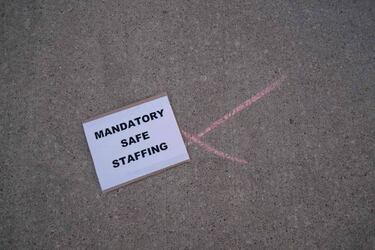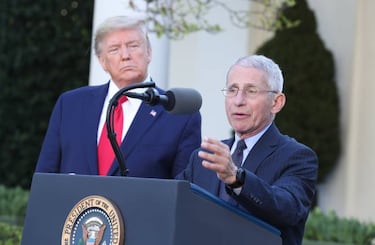US unemployment figures: latest jobless claims, 16 April
The impact of the spread of Covid-19 across the United States of America has seen a surge in jobless claims, with another 5.2 million added this week.

The economic impact that the United States has suffered with the ongoing pandemic has resulted in 22 million American citizens file for unemployment benefits over the space of just four weeks.
Stimulus spending
Coronavirus relief money is arriving in bank accounts as states across the country struggle to process unemployment claims filed by more than 22 million Americans over the past month, and helping some people cover the essentials.
"It's going to get used quickly because there are so many people who need money right now," said Claudia Sahm, a former Federal Reserve economist and now the director of macroeconomic policy at the Washington Center for Equitable Growth.
Preliminary results from a survey Sahm is conducting with Google and the University of Michigan suggest U.S. families plan to spend the money on essentials or pay off debt, Sahm said.

That is the way stimulus checks were used during the financial crisis of 2008 and to counter an economic slowdown during the summer of 2001, she said.
Some people said they were planning to save the cash temporarily, an indication the payments may not lead to the immediate economic stimulation hoped for by the government.
Hyniah Herrin, 26, wanted to enroll in college this fall but put those plans on hold after she lost her two part-time jobs as a school bus driver and restaurant host in Philadelphia. The stimulus money landed in her bank account on Monday, and she's holding on to it. "We don't know when we're going to be able to resume life," Herrin said.
Follow all the latest news related to the coronavirus crisis with our daily feed.
USA hit
All areas of industry appear to be unable to avoid hits and every state across the land is being hurt by the effects of the lockdown measures, despite them being slacker than in some other countries.
Considering that prior to this pandemic, the record high for US unemployment was set in 1982, at 695,000, but forecasts say that a 15% rate could soon be reached, with some even looking at breaching 30% over the coming weeks. Compare that to the 25% of the Great Depression of the 1930s.

All this comes despite the packages of financial support that president Donald Trump has put out, although he will hope that this starts to show some results over the coming weeks.
Trump pushes for reopening amid concerns
US President Donald Trump is expected to lay out a strategy to phase out the month-long economic shutdown aimed at combating the coronavirus pandemic, despite concerns from health experts, state governors and business leaders about the dangers of lifting restrictions without widespread testing in place.
Trump will push states to lift stay-at-home orders that have shut down business and social life as the number of deaths recorded in the United States stands at 33,000, higher than any other nation.
The Federal government has ordered and shipped hundreds of millions of PPE items around the country. pic.twitter.com/bVD3SyuXas
— The White House 45 Archived (@WhiteHouse45) April 15, 2020
State restrictions
The state restrictions have strangled the U.S. economy to an extent not seen since the Great Depression nearly a century ago.
Another 5.2 million more Americans sought unemployment benefits last week, the Labor Department reported on Thursday, lifting total filings for claims over the past month to more than 20 million.
The Republican president, who has staked his re-election in November on the strength of the U.S. economy, is scheduled to hold a call with the nation's governors on Thursday evening and confirmed that he would announce his plan at a news conference later that evening.
Why unemployment rates matter
Related stories
As the US Bureau of Labor Statistics states, when workers are unemployed, their household misses out on an income, and the whole nation then loses their contribution to the economy in terms of the goods or services that could have been produced.
Unemployed workers also have much lower purchasing power, meaning less is consumed, which can lead to unemployment for others. This creates a cascading effect that ripples through the economy.
